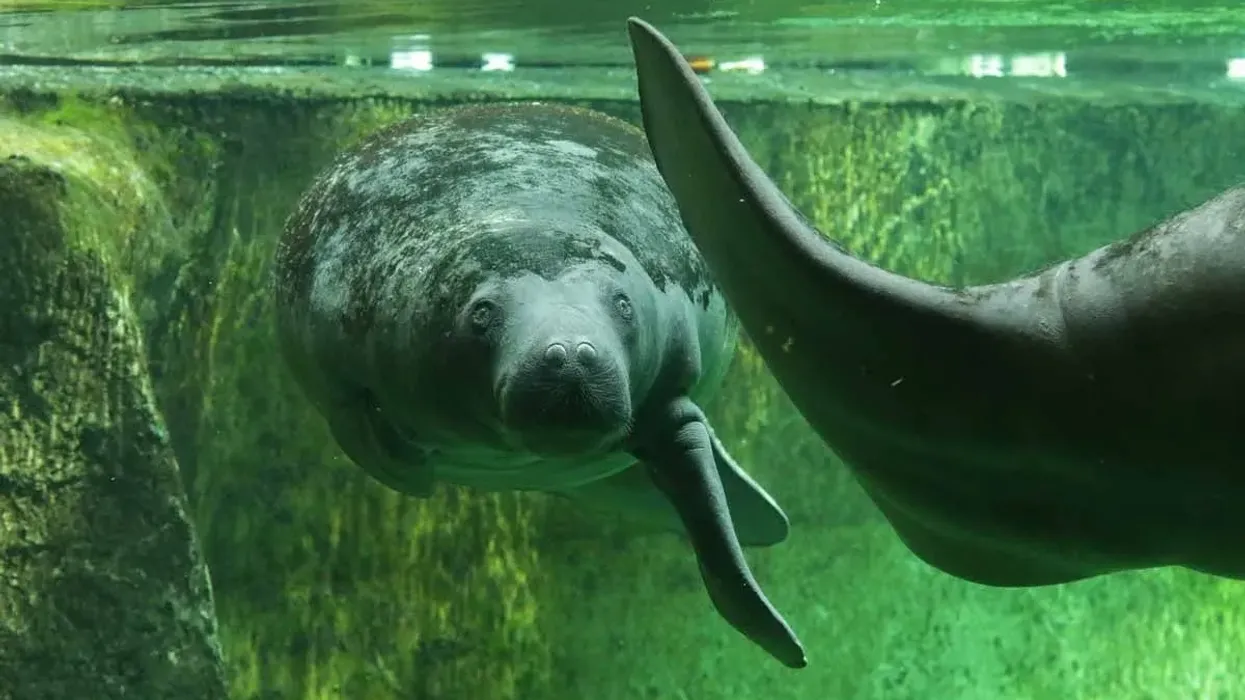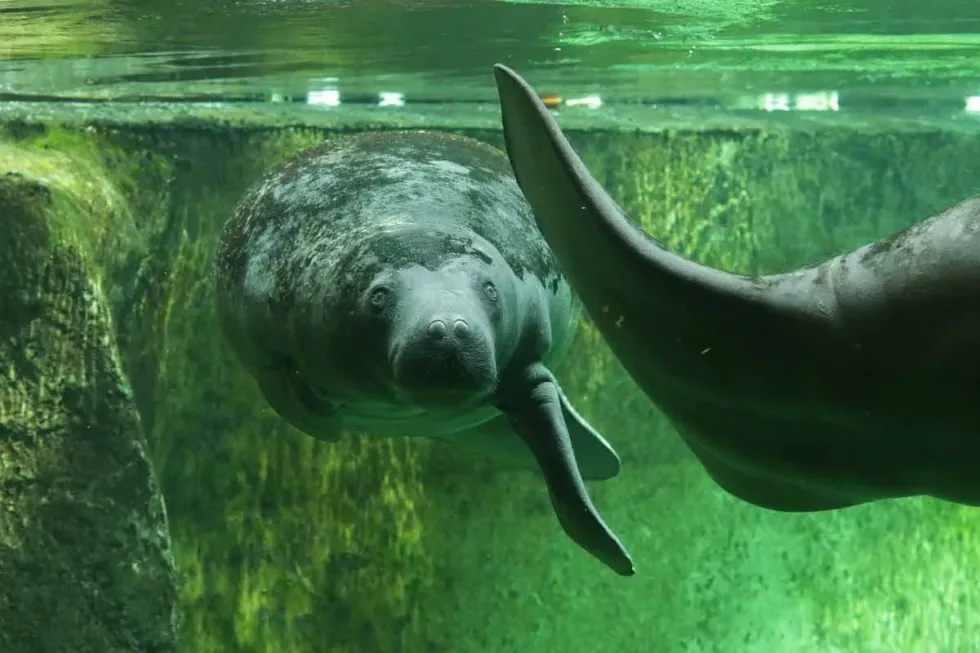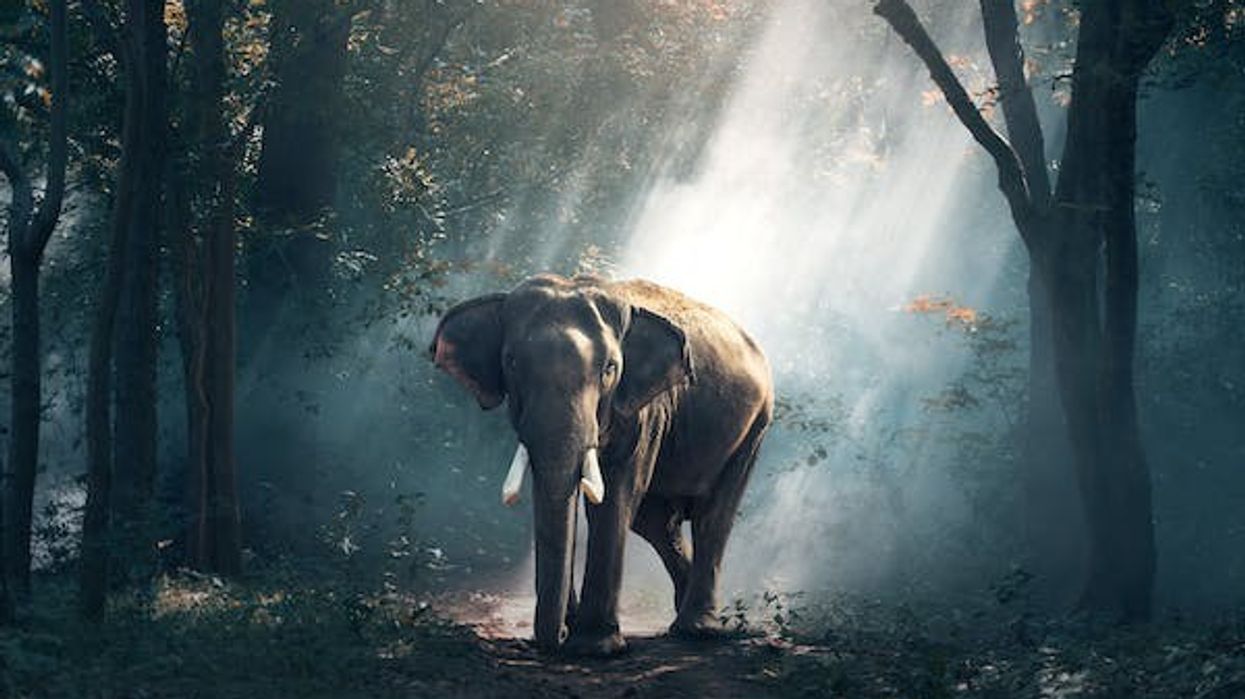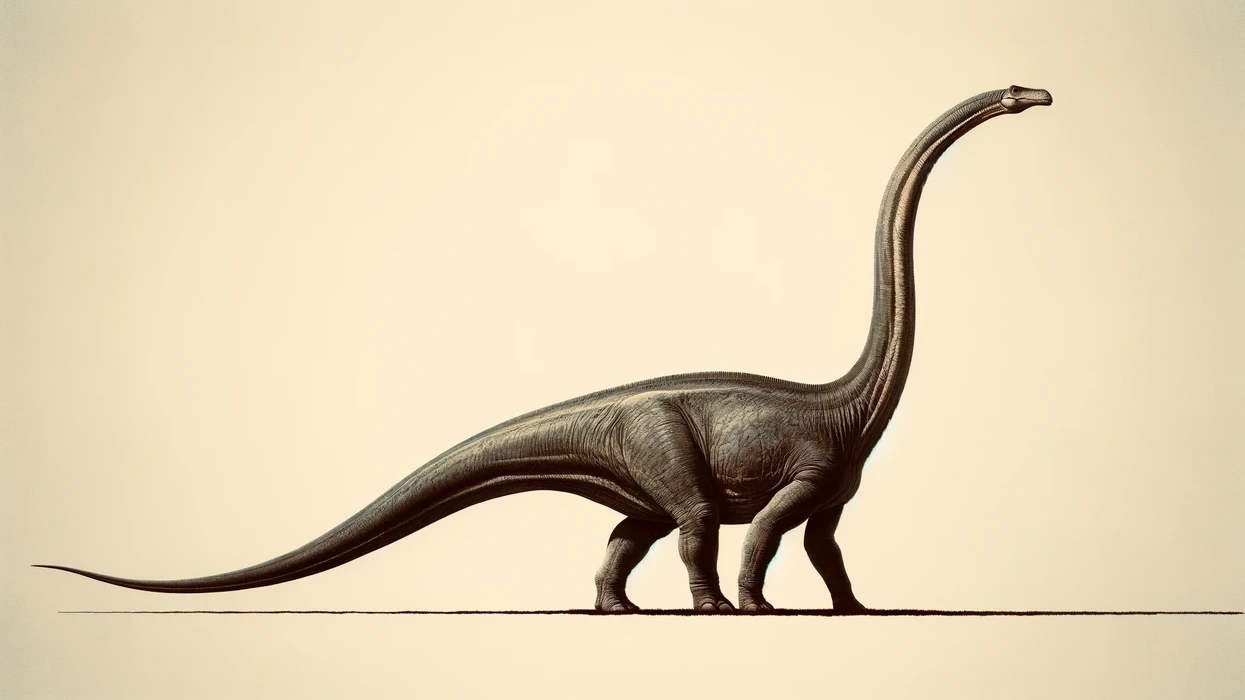African manatees are also known as the West African manatee and they live in western regions of Africa. You can find them spread from Senegal to Angola.
There are three manatee species: the African Manatee (Trichechus senegalensis), the West Indian manatee (Trichechus manatus), and the Amazonian manatee (Trichechus inunguis). These animals can live alone as well as in groups of five to 15 and the African manatee has few natural predators, including crocodiles, sharks, and humans.
Read on for more interesting facts about the West African manatee. If you like these facts about a West African manatee, you can find more interesting animal facts in our articles on the West Indian manatee and the leopard seal.
African Manatee Interesting Facts
What type of animal is an African manatee?
The West African manatee is a slow-moving aquatic mammal that can be found in the western regions of the continent of Africa. It is found in areas of fresh water from Angola to Senegal. They are gentle, and shy, and have some resemblance to dolphins and whales. Their scientific name is Trichechus senegalensis.
What class of animal does an African manatee belong to?
The African Manatee (Trichechus senegalensis) belongs to the class Mammalia.
How many African manatees are there in the world?
The West African manatee population is difficult to track as they are isolated in small numbers in a vast geographical region. The exact population is still unknown however in the late '80s it was roughly predicted to be approximately 10,000.
Where does an African manatee live?
The West African manatee lives in a variety of flooded forests, wetlands, seasonal floodplains, freshwater bodies like lakes and rivers, and coastal areas of West Africa stretching from Angola to Senegal.
They keep swimming up rivers in search of food until they come across shallow water or face strong waterfalls in areas where they can't swim further. At times when there is a change in water levels due to irregular rainfall, they can get trapped in freshwater sources like lakes and estuaries where there are limited options to feed on.
It might be due to this limited availability of food that the West African manatee (Trichechus senegalensis) also sometimes eats clams, mollusks, and fish from nets.
What is an African manatee's habitat?
The West African manatee has a habitat that comprises coastal areas, lagoons, and mangroves that are calm. Seagrass and aquatic vegetation are abundant on the coast of Africa and the temperature of the freshwater they live in is above 64 F (18 C).
They travel up rivers in search of food and reach connected lakes, shallow lagoons, and grassy estuaries with mangroves. African manatees can travel offshore in Africa in search of shallow coastal water and calm mangrove creeks filled with seagrass and aquatic vegetation.
Who do African manatees live with?
The West African manatee can live alone as well as in groups of five to 15. They share their freshwater river habitat with other aquatic creatures like fish, reptiles, frogs, snails, and turtles.
How long does an African manatee live?
African manatees in the wild have a lifespan of around 30 years. In captivity, West African manatees may live for 12 to 13 years.
How do they reproduce?
African manatee females can give birth to one calf at a time. Among manatee populations, females mature for reproduction by the age of three years and give birth every three to five years.
The normal gestation period is around 12 to 13 months. Male African manatees are smaller than females, but other than this size difference, they both look similar and can only be differentiated by their genital organs.
They can breed any time of the year and females can have multiple male partners. This breeding pattern is called polyandry.
What is their conservation status?
The African manatee is considered to be Vulnerable according to the IUCN Red List of Threatened Species. The African manatee has also been marked as an endangered species in Appendix II of the Convention on International Trade in Endangered Species (CITES). As per CITES guidelines, any trading activity involving an African manatee is prohibited and should be strictly monitored.
The first phase of the West African Manatee Conservation Project was carried out between November 2004 and December 2007. Mauritania, The Gambia, Senegal, Guinea, Sierra Leone, and Guinea-Bissau participated in this first phase to create a database of lesser-known facts about the species.
They gathered information about the population, habitat range, and economic value of the species.
Later, other countries also stepped in to help gather reports which helped to increase our overall knowledge of African manatees. This knowledge is hugely useful for researchers, scientists, and conservationists to help with the conservation of this species.
There are laws to protect the African Manatee in countries where they are found, but they are not always strictly followed. In the absence of strict law enforcement and proper education, the population of the African manatee is sadly depleting rapidly.
African Manatee Fun Facts
What do African manatees look like?
The physical appearance of African manatees is very similar to that of seals or sea lions. It has a blubbery face, light gray skin, and small hair all over its body.
Its body is widest in the middle and it has a tail that looks like a paddle. They might appear brown or green due to the algae formation on their skin and during birth, an African manatee’s calf has a darker skin color that gradually fades away as they grow.
They have flippers or forelimbs that help to paddle water and push food to their mouth. Their flippers have nails that they used to scratch and gaze at other manatees. They can grow up to 15 ft (4.5 m) long and weigh 794 lb (360 kg).
How cute are they?
An African manatee’s blubbery face and physical appearance resemble seals and dolphins and make them look very cute. They are harmless, gentle, and shy creatures. An attack by any manatee species is very rare and is unheard of.
How do they communicate?
The African manatee communicates using high and low-pitch voice sounds, also known as acoustic signals.
How big is an African manatee?
African manatees can range anywhere between 137-177 in (350-450 cm) in length.
How fast can an African manatee move?
African manatees swim at speeds of 3-5 mph (4-8 kph). However, they can attain speeds up to 20 mph (32 kph) when fleeing away from an enemy.
How much does an African manatee weigh?
They weigh anywhere between 793-837 lb (360-380 kg).
What are the male and female names of the species?
Female and male African manatees are called a 'cow' and a 'bull' respectively.
What would you call a baby African manatee?
A baby African manatee is called a 'calf'.
What do they eat?
They eat aquatic vegetation such as seagrass, water lettuce, and hyacinth. There are unconfirmed reports that African manatees also eat fish trapped in nets, as well as clams and mollusks in the river.
Are they dangerous?
None of the manatee species are poisonous. Due to the presence of their large snout, they can’t even bite. An African manatee is known for being a shy and harmless creature.
Would they make a good pet?
As they are an endangered species, it is illegal to keep them as pets. In captivity, they only live up to 13 or 15 years whereas in the wild they can live up to 30 years.
Did you know...
The African manatee is a nocturnal creature that sleeps during the day in shallow waters and searches for food at night. They can eat 4-9% of their body mass in a day.
Molars are the only teeth an African manatee has, and they have a pair of molars from birth. Their molars fall out throughout their life and get replaced by new ones.
African manatees are narrower and longer than Amazonian manatees. Unlike their Amazonian cousins, the African manatee does not have a white patch mark on its belly. Compared to the Amazonian manatee, the African manatee has a longer and sleeker body.
Why is the African manatee endangered?
The African manatee population has been severely affected due to heavy fishing activities, construction of dams, habitat loss, entrapment in fishing nets, and illegal poaching. They are now an endangered species and are categorized as Vulnerable.
Variations Of The African Manatee
There are three Manatee species: the African Manatee (Trichechus senegalensis), the West Indian manatee (Trichechus manatus), and the Amazonian manatee (Trichechus inunguis). The Dugong is another aquatic mammal that looks very similar to the African manatee. The Duong is also a vulnerable species.
Here at Kidadl, we have carefully created lots of interesting family-friendly animal facts for everyone to discover! Learn more about some other mammals including the fin whale, or the Sumatran rhinoceros.
You can even occupy yourself at home by drawing one on our African manatee coloring pages.









